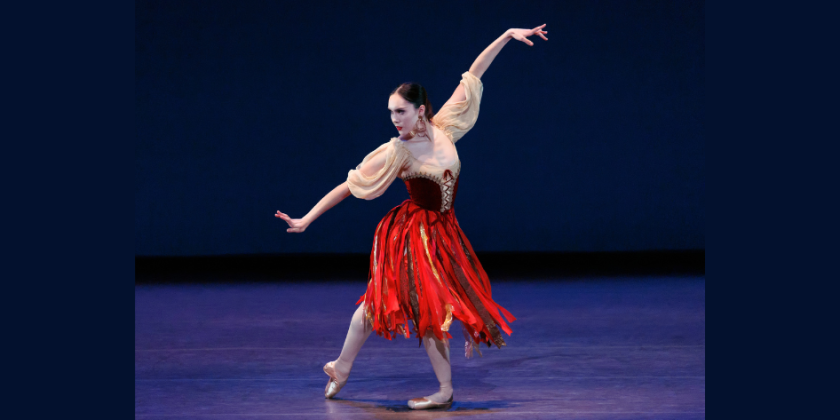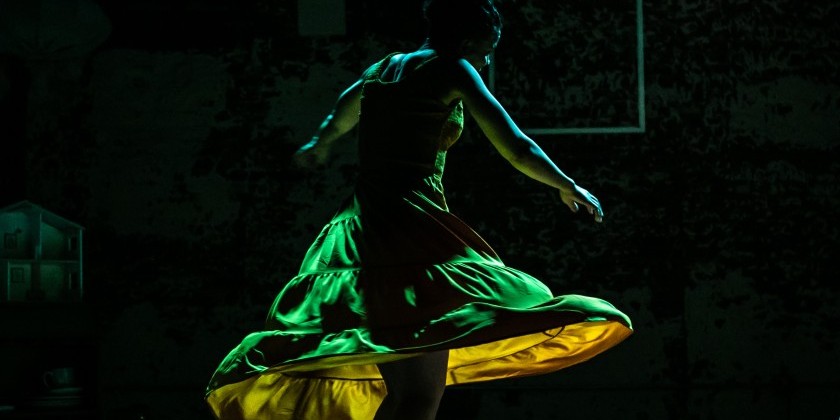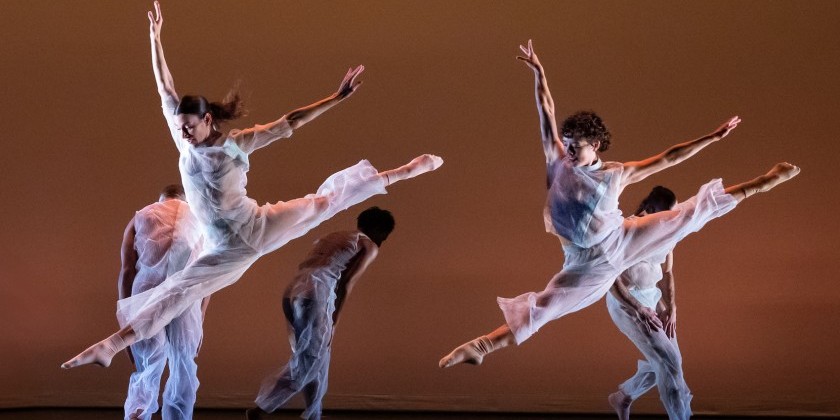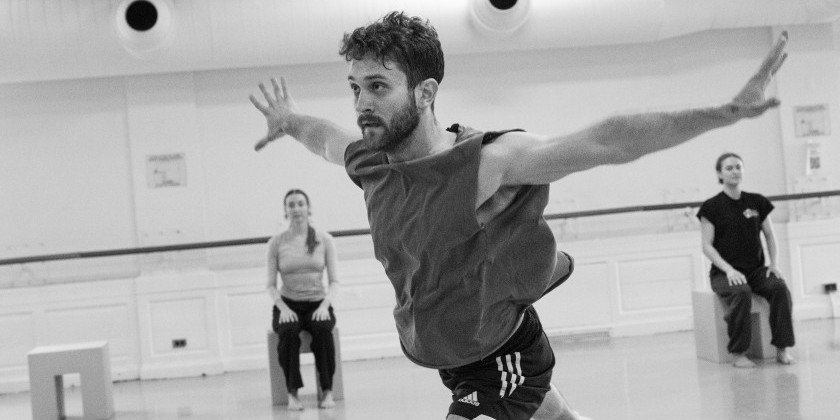IMPRESSIONS: Michael-Keegan Dolan at St. Ann's Warehouse
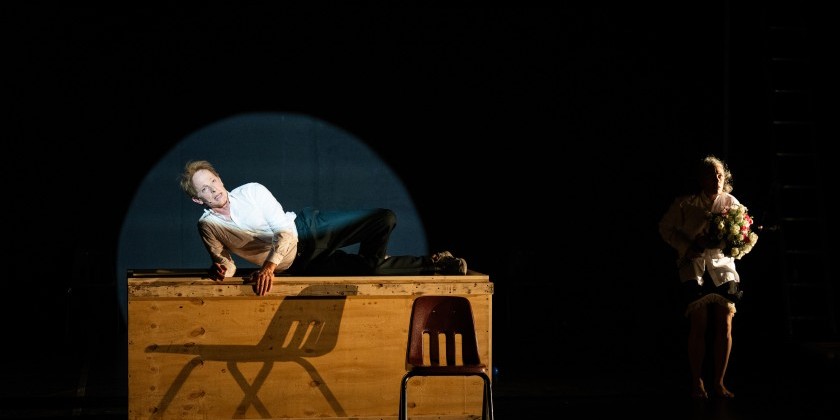
How to Be a Dancer in 72,000 Easy Lessons
How to Be a Dancer in 72,000 Easy Lessons
Choreographed and Performed by Michael Keegan-Dolan and Rachel Poirier
Directed by Rachel Poirier and Adam Silverman
Costume Design: Hyemi Shin
Sound Design: Sandra Ni Mhathúna
Stage Manager: Katie Young
October 27, 2023
Smoking a cigarette and donning protective glasses, performer Rachel Poirier walks on stage at St. Ann’s Warehouse holding a chain saw. She saws open the lock on a large wooden crate, pulling out a comical number of disparate items: a bike, disco ball, balloon, cinder blocks, shoes, a football. As she arranges these items around the performance space as if unpacking from a move, Michael Keegen-Dolan begins an exhumation of his roots in which these objects serve as visual aids. Between snatches of songs and scenes, Keegan-Dolan recalls his childhood in Dublin, growing up one of twelve children amidst the Irish hunger strikes and IRA bombings. This personal narrative taps into collective memory. While the details of his story may not be familiar to all, they evoke a kinship that urges us to recollect our own past. Weaving together music from pop icons The Talking Heads, Queen, Men Without Hats and Depeche Mode, Keegan-Dolan takes us back in time to the 1980’s, to the awkwardness of adolescence and the struggle to find one’s place in a sometimes violent and prejudicial world.
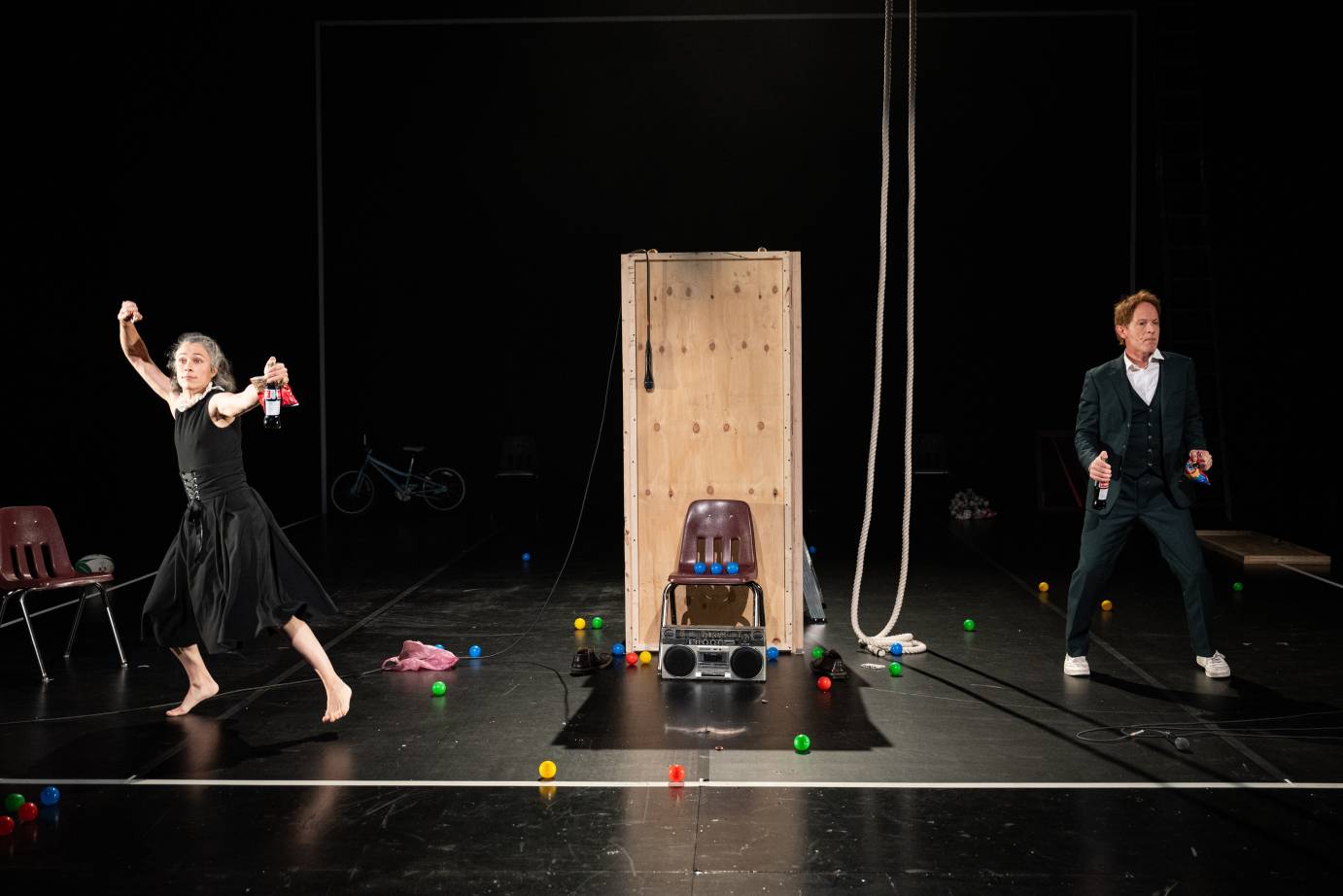
Although the show’s title implies a step-by-step guide leading to a career in dance, How to Be a Dancer in 72,000 Easy Lessons is not an instruction manual, but rather a collection of musings like snippets from a journal. They feel intimate, the sharing of them necessary, as if Keegan-Dolan is excavating meaning by publicly illustrating the pieces of his life. We learn about the devastating loss of his brother, his spiritual awakening after a yoga retreat, abuses he suffered at the hands of a priest, and his experiences of anti-Irish animosity in the UK. All of these pieces ultimately result in a successful career as a choreographer, yet how this pigeon-toed boy who showed up to his first ballet class wearing his rugby track suit achieved success remains unclear and ultimately irrelevant.
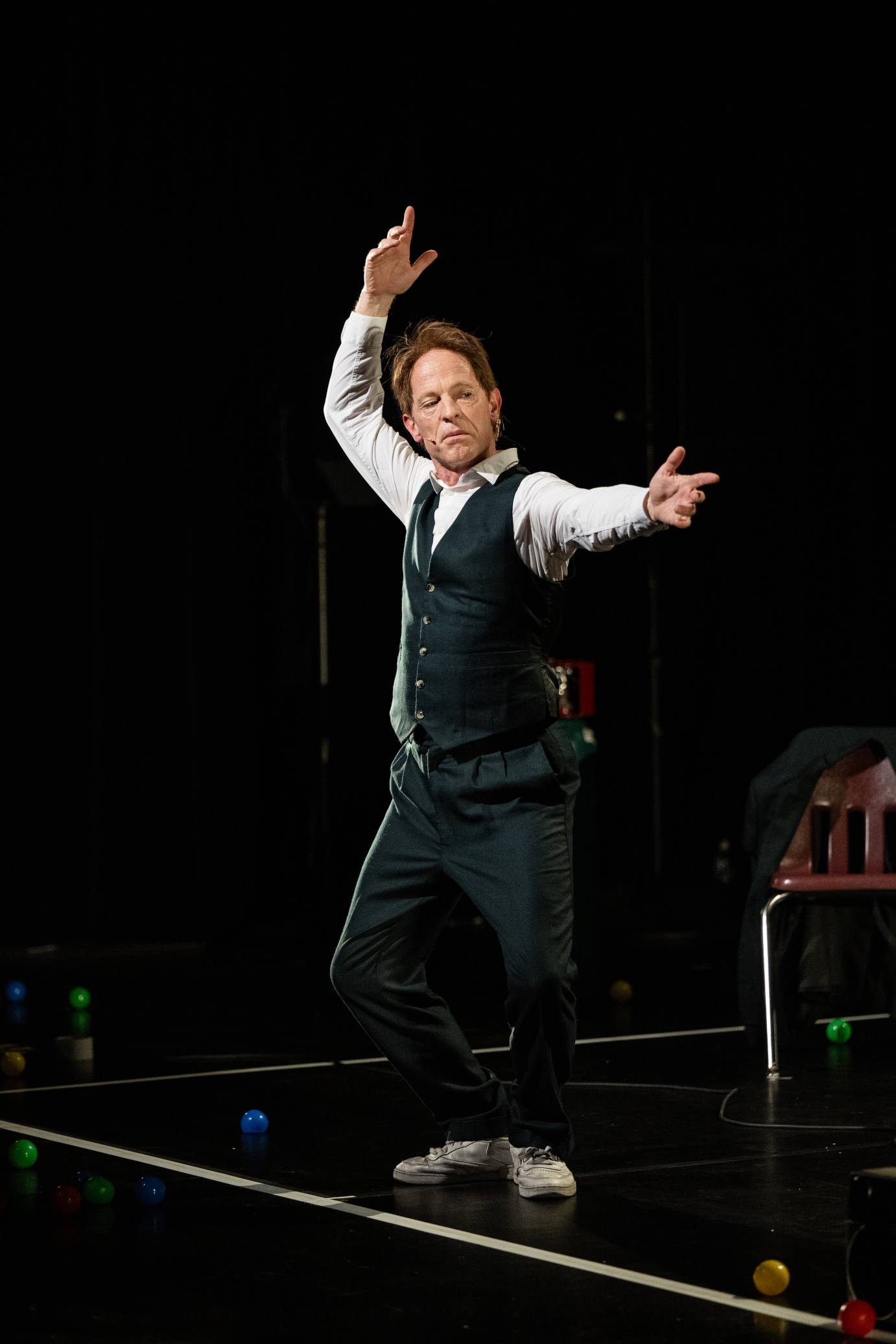
While Keegan-Dolan narrates, grounded and expressive in his body yet only ever performing simple movements, Poirier embodies his recollections, the personification of the strangeness of life and the meandering course of a life in the arts. Together they make two sides of a performer. Keegan-Dolan speaks in prose while Poirier speaks in poetry and metaphor, providing live sound effects as she manipulates props. She mimics the sound of a tape rewinding as Keegan-Dolan holds a boom box. Poirier dances through each anecdote while Keegan-Dolan recites them; and as the many vignettes flow past the audience barely has time to register their emotional weight before Keegan-Dolan moves on, the pace of the show quick and unrelenting. Although humorous and whimsical, How to Be a Dancer has a dark underbelly. Keegan-Dolan’s success stories feel like apologies for his shortcomings, and he expresses surprise at his achievements. Rather than simply performative, his vulnerability is inclusive, inviting the audience to recognize our own feelings of inadequacy and the subsequent responses that shaped our lives. In the same amiable tone with which he details his embarrassing failures as a rugby player, or his nagging doubts about his life’s purpose, Keegan-Dolan describes finally feeling a sense of belonging when he entered his first dance class at age eighteen, despite being surrounded by nine-year-old girls in pink tights. As he recounts years spent in front of a mirror being told by teachers to be more like “this” and less like “that,” the show’s title suddenly acquires a different meaning. Perhaps the 72,000 steps are actually a series of cumulative responses to circumstances, hindsight providing the wisdom to recognize the ways in which his choices shaped him and his career.
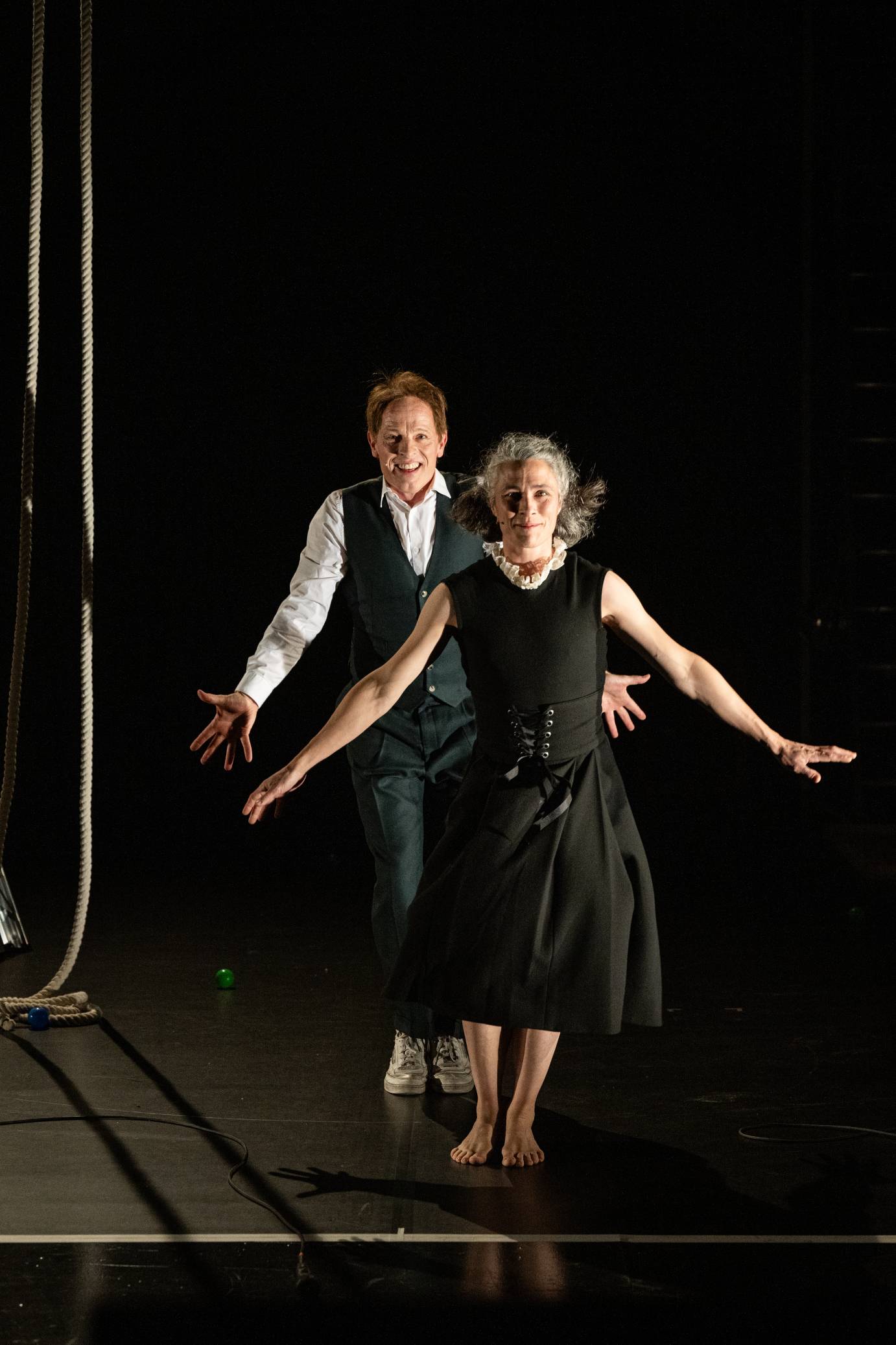
The high point of the evening comes towards the end in Poirier’s extended solo. Full of both abandon and specificity, Poirier propels herself through space like a rag doll being controlled by an outside force. Loping runs resolve in balanced turns. Arms fly out with force as her leg extends in a long arabesque. Her ability to contrast weightiness and buoyancy is so mesmerizing one could easily miss the composition. Familiar moments slowly begin to stand out, like the teenage club scene and ballet steps from that fateful first class. Deftly weaving together movements from each vignette, Poirier unites Keegan-Dolan’s fragments into a whole story: the embodied story of his life.
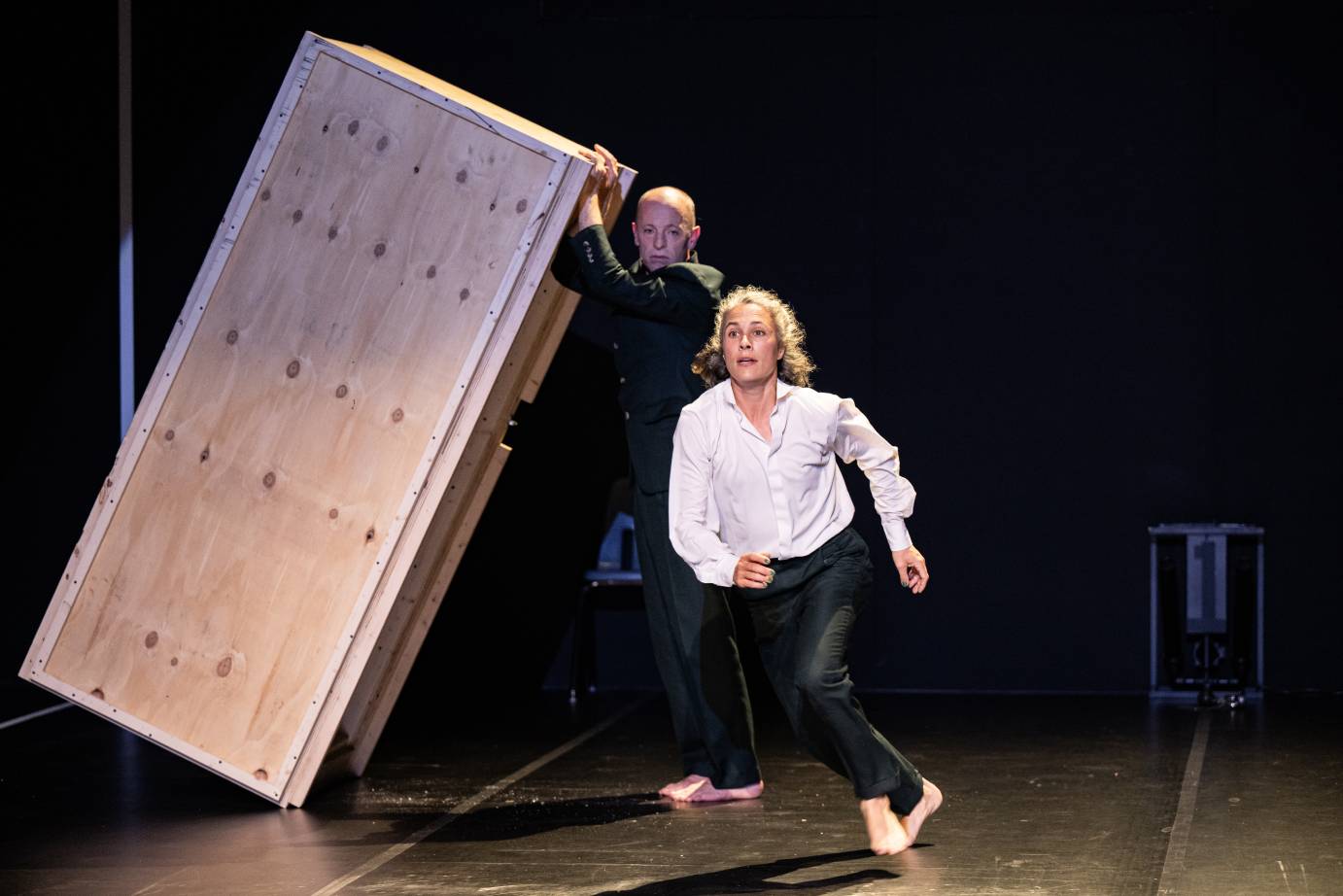
Keegan-Dolan’s narrative ends and he stands upstage bearing the weight of the tilted wooden crate. He watches Poirier as she seamlessly moves through exhilaration, hopelessness, and frenzy, finally arriving at peace. She sits in a chair facing the audience, and he joins her. With their eyes closed as if in peaceful contemplation, they listen as the finale of Stravinsky’s Firebird Suite resounds through the space. Keegan-Dolan finds his place in a turbulent world, and offers us the space to do the same.









